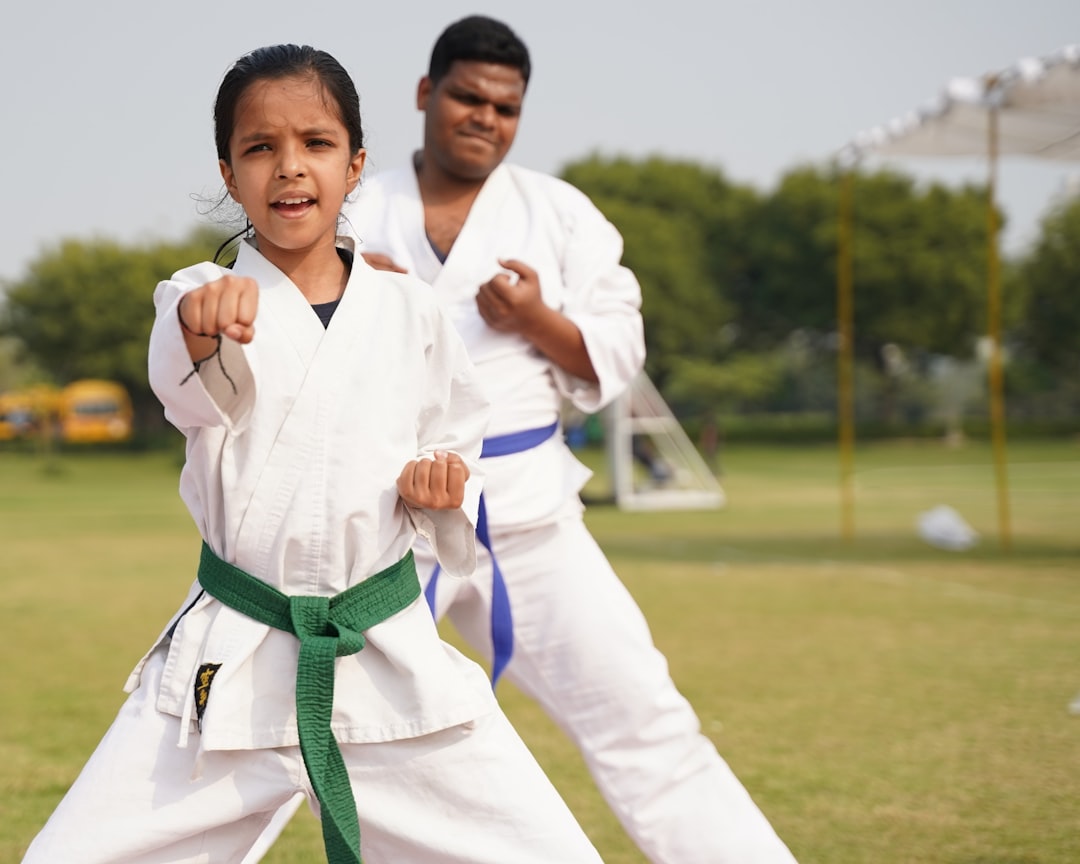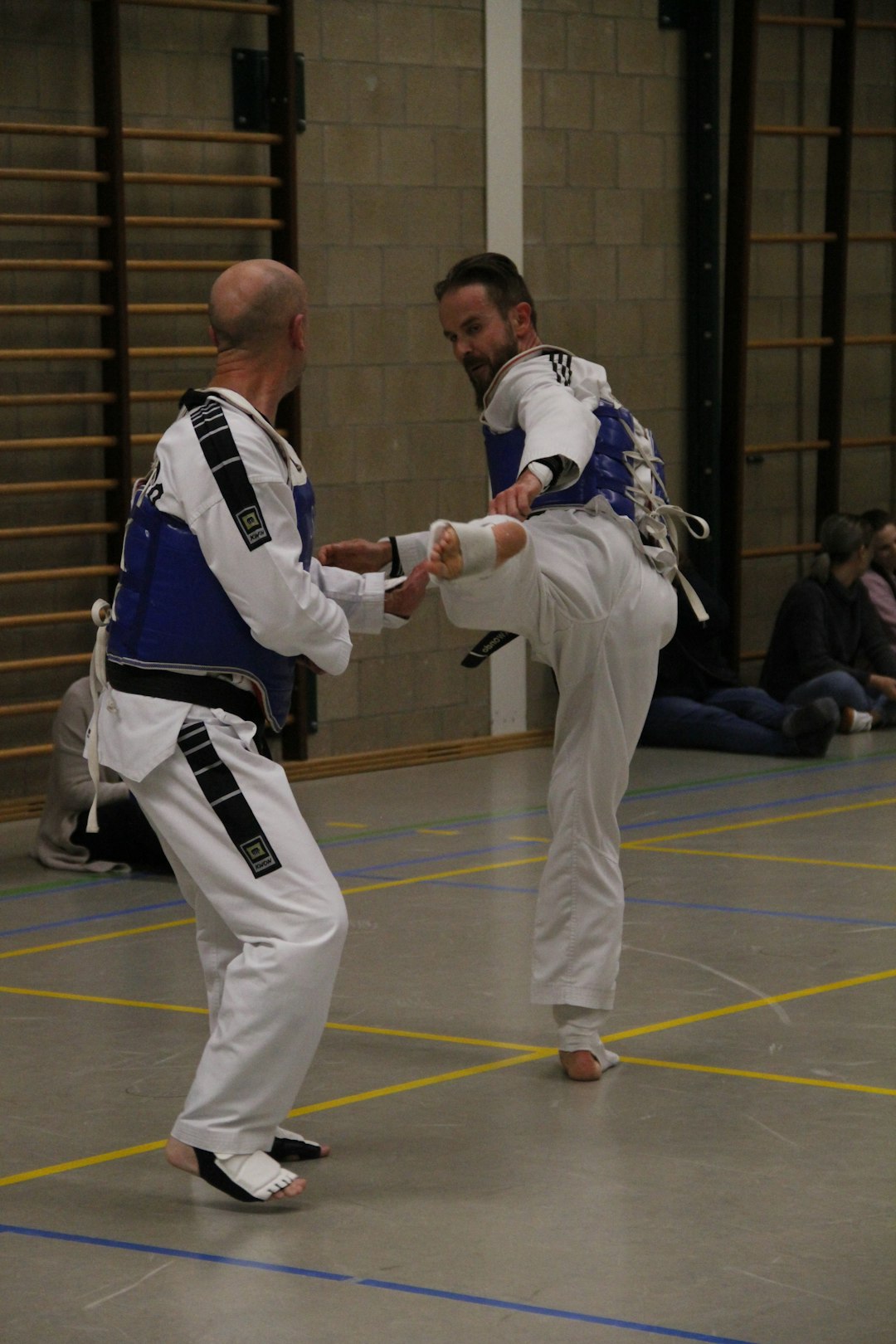The karate suit, or "gi," is an integral part of karate practice and culture, embodying both functional and traditional significance. While its design is rooted in historical influences from Okinawan and Japanese martial arts attire, the modern gi remains a white uniform with a jacket, trousers, and belt, allowing for full range of motion and serving as a symbol of respect and unity among practitioners. The choice between a practice gi, which is heavier and more durable for daily use, and a competition gi, which is lighter and designed to provide no undue advantage, depends on personal preference, the specific karate style, and the dojo or competition standards one adheres to. Both types of gis must meet certain fabric and design criteria to be acceptable in training and competitive settings, with competition gis also subject to color regulations by organizations like the World Karate Federation. Ultimately, selecting the appropriate karate suit called gi is crucial for both the practical aspects of martial arts training and adherence to the sport's traditions and rules.
Karate enthusiasts, whether novices or seasoned practitioners, recognize the significance of the attire that adorns their movements. The garment in question is none other than the karate suit, affectionately termed a ‘Gi’. This article delves into the intricacies of the Gi’s construction, its evolution, and the distinctions between different types. From the origins of this traditional wear to the key characteristics and materials that make a Gi suitable for practice and competition, gain insight into what truly sets these uniforms apart in the realm of martial arts.
- Understanding the Essentials of Karate Suits Called Gi
- The Evolution and Types of Karate Gi
- Key Characteristics and Materials in a Traditional Karate Suit
- Selecting the Right Karate Suit Called Gi for Practice and Competition
Understanding the Essentials of Karate Suits Called Gi

When delving into the realm of martial arts, one term that frequently surfaces is “karate suit.” Often referred to colloquially as a uniform or outfit, this garment holds significance within the practice of karate. Known formally as a “gi,” this traditional Japanese garb is an integral component of the discipline, emphasizing the importance of respect and tradition in martial arts training. The gi serves not only as a practical uniform but also as a symbol of the practitioner’s dedication to the art. Typically, a karate gi consists of a jacket, trousers, and belt, each with specific characteristics that cater to functionality and formality. What distinguishes a karate gi from other martial arts uniforms are its distinct pockets, its durable but breathable fabric, and its clean lines that allow for unrestricted movement during practice or competition.
Is the karate suit called a “gi” in Japanese? Yes, it is. The term “gi” originates from Japan and is the correct designation for the traditional white garb worn by practitioners of various martial arts, including karate. The gi’s design facilitates ease of movement while allowing the instructor to easily observe the student’s form and technique. Additionally, the uniform helps to foster a sense of unity and respect among those who practice the art, as all wear the same attire, signifying equality on the mat. When selecting a karate gi, one should consider the weave of the cotton fabric, which can vary in thickness and weight, offering different levels of rigidity and flexibility. This choice is often based on personal preference, the style of karate being practiced, and the specific requirements of a dojo or competition rules.
The Evolution and Types of Karate Gi

The karate suit, commonly referred to as a gi, has a rich history and has evolved over time to meet the functional needs of practitioners while also adhering to traditional aesthetics. Originally, martial artists in Okinawa wore a garment similar to the Chinese kua, which was made of cotton and served a practical purpose during training. As karate spread to Japan, the gi began to take on its more familiar shape, with the addition of a belt, or obi, to denote rank. Today, the traditional karate gi consists of a jacket and trousers made of cotton or hemp canvas fabric, which provides durability and allows for ease of movement during various techniques. The top, known as an uwaagi, features long sleeves with a closure of buttons or ties, while the trousers, called nagi, are straight-legged and secured at the waist by the obi. The specifications can vary slightly depending on the style of karate being practiced; for example, Shotokan gi tend to be more fitted than those used in Shito-ryu or Kyokushin karate. What is the traditional fabric used for karate gis and why? The traditional fabric is cotton or hemp canvas because it offers durability and a good range of movement, which are essential for the rigorous training that karate involves. Additionally, these materials have been historically significant in martial arts practice, contributing to the tradition’s continuity and respect for its origins.
Key Characteristics and Materials in a Traditional Karate Suit

A traditional karate suit, often referred to as a gi, is a garment rich in history and symbolism within the martial arts community. The gi serves as both a uniform and a representation of respect for the discipline of karate. It is composed of several key characteristics that distinguish it from other martial arts uniforms. Are the materials and design elements of a karate suit called gi significant? Absolutely, as they contribute to the wearer’s mobility, comfort, and respect for the practice. Typically, a traditional karate suit is made of heavy cotton or hemp fabric, which allows for breathability while providing durability during rigorous training sessions. The jacket, known as the “uwagi,” is designed to be fitted yet allow for a full range of motion, while the pants, called “hakama” in some styles, are straight-legged and secure with a drawstring at the waist. The top is usually white, symbolizing purity and humility, and it is traditionally paired with black pants; however, different colors may be used to represent different ranks or belts within the karate hierarchy. The fabric’s weight varies depending on the style of karate practiced and the preference of the dojo, ranging from lighter materials for summer training to heavier ones for cooler seasons. These characteristics and materials are not only integral to the practice of karate but also serve as a visual indicator of discipline and commitment to the martial art.
Selecting the Right Karate Suit Called Gi for Practice and Competition

When selecting a karate suit, also known as a gi, for practice and competition, it’s crucial to consider the materials, fit, and regulation compliance that suits adhere to. The gi is an integral part of a martial artist’s uniform, serving both functional and ceremonial purposes. Made of cotton or a cotton-blend fabric, the gi allows practitioners to move freely while providing a standardized appearance across different schools of karate. It consists of a jacket, trousers, belt, and sometimes a hood, each element contributing to the discipline’s tradition. For practice, a heavyweight gi is often preferred for its durability and comfort during rigorous training sessions. However, for competitions, a lighter and less rigid gi might be advantageous as it facilitates easier movement and can provide a competitive edge due to its reduced resistance. Always ensure that the gi you choose complies with the specific requirements of your karate dojo or competition organization to avoid disqualification or inappropriateness during training.
What differentiates a practice gi from one meant for competition? The key distinctions lie in the weight and texture of the fabric, as well as the cut of the garment. A practice gi is typically heavier and has a sturdier construction to withstand the wear and tear of daily training. In contrast, a competition gi is designed to be lighter, more flexible, and often has a smoother, less textured weave to minimize any potential advantage one might gain from fabric grip during sparring. Additionally, competition gis may have specific color requirements, as dictated by the World Karate Federation or other martial arts governing bodies. It’s essential to check these details before purchasing a gi for competitions to ensure it meets all necessary standards.
In conclusion, the karate suit, commonly referred to as a gi, is far more than a mere garment; it represents tradition, discipline, and respect for the martial art of karate. From its origins to the present day, the evolution and variety of karate suits have adapted to serve both functional and symbolic purposes. Whether one is practicing or competing, selecting the right gi is essential for comfort, durability, and adherence to the principles of this esteemed practice. Understanding the key characteristics and materials that compose a traditional karate suit equips practitioners with the knowledge to choose a garment that not only meets their needs but also honors the rich history of the art. Thus, the karate suit, or gi, remains an integral part of the martial art experience, embodying the essence of karate’s heritage and its ongoing evolution.
